| |||||
| Centuries: | |||||
|---|---|---|---|---|---|
| Decades: | |||||
| See also: | List of years in Scotland Timeline of Scottish history 1313 in: England • Elsewhere | ||||
Events from the year 1313 in the Kingdom of Scotland .
| |||||
| Centuries: | |||||
|---|---|---|---|---|---|
| Decades: | |||||
| See also: | List of years in Scotland Timeline of Scottish history 1313 in: England • Elsewhere | ||||
Events from the year 1313 in the Kingdom of Scotland .
unknown date –

The Declaration of Arbroath is the name usually given to a letter, dated 6 April 1320 at Arbroath, written by Scottish barons and addressed to Pope John XXII. It constituted King Robert I's response to his excommunication for disobeying the pope's demand in 1317 for a truce in the First War of Scottish Independence. The letter asserted the antiquity of the independence of the Kingdom of Scotland, denouncing English attempts to subjugate it.

Robert I, popularly known as Robert the Bruce, was King of Scots from 1306 to his death in 1329. Robert was one of the most famous warriors of his generation and eventually led the Kingdom of Scotland during the First War of Scottish Independence against England. He fought successfully during his reign to regain Scotland's place as an independent country and is now revered in Scotland as a national hero.

The Wars of Scottish Independence were a series of military campaigns fought between the Kingdom of Scotland and the Kingdom of England in the late 13th and early 14th centuries.

The Battle of Bannockburn on 23 and 24 June 1314 was a victory of the army of King of Scots Robert the Bruce over the army of King Edward II of England in the First War of Scottish Independence. Although it did not bring an end to the war, as victory would only be secured 14 years later, Bannockburn is still a major landmark in Scottish history.

Robert II was King of Scots from 1371 to his death in 1390. He was the first monarch of the House of Stewart as the son of Walter Stewart, 6th High Steward of Scotland, and of Marjorie Bruce, daughter of the Scottish king Robert the Bruce by his first wife Isabella of Mar.
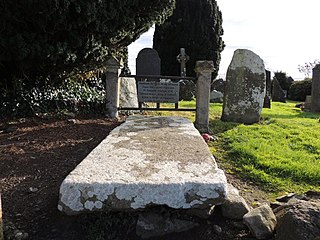
Edward Bruce, Earl of Carrick, was a younger brother of Robert the Bruce, King of Scots. He supported his brother in the 1306-1314 struggle for the Scottish crown, then pursued his own claims in Ireland. Proclaimed High King of Ireland in 1315 and crowned in 1316, he was eventually defeated and killed by Anglo-Irish forces of the Lordship of Ireland at the Battle of Faughart in County Louth.

Duke of Rothesay is a dynastic title of the heir apparent to the British throne, currently Prince Charles. Charles' wife Camilla, Duchess of Cornwall, is the current Duchess of Rothesay. Duke of Rothesay was a title of the heir apparent to the throne of the Kingdom of Scotland before 1707, of the Kingdom of Great Britain from 1707 to 1801, and now of the United Kingdom of Great Britain and Northern Ireland. It is the title mandated for use by the heir apparent when in Scotland, in preference to the titles Duke of Cornwall and Prince of Wales, which are used in the rest of the United Kingdom and overseas. The Duke of Rothesay also holds other Scottish titles, including those of Earl of Carrick, Baron of Renfrew, Lord of the Isles, and Prince and Great Steward of Scotland. The title is named after Rothesay on the Isle of Bute, Argyll and Bute, but is not associated with any legal entity or landed property, unlike the Duchy of Cornwall.

The Royal Scots Navy was the navy of the Kingdom of Scotland from its origins in the Middle Ages until its merger with the Kingdom of England's Royal Navy per the Acts of Union 1707. There are mentions in Medieval records of fleets commanded by Scottish kings in the twelfth and thirteenth centuries. King Robert I, developed naval power to counter the English in the Wars of Independence (1296–1328), and after the establishment of Scottish independence continued to build up naval capacity. In the late fourteenth century naval warfare with England was conducted largely by hired Scots, Flemish and French merchantmen and privateers. King James I, took a greater interest in naval power establishing a shipbuilding yard at Leith and probably created the office of Lord High Admiral.
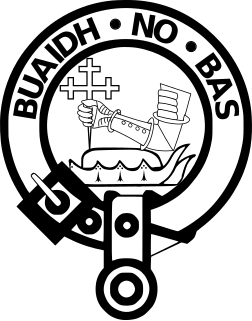
Clan MacDougall is a Highland Scottish clan, historically based in and around Argyll. The Lord Lyon King of Arms who is the Scottish official with responsibility for regulating heraldry in that country, issuing new grants of coats of arms, and serving as the judge of the Court of the Lord Lyon, recognizes under Scottish law the Chief of Clan MacDougall. The MacDougall chiefs share a common ancestry with the chiefs of Clan Donald in descent from Somerled of the 12th century. In the 13th century the Clan MacDougall whose chiefs were the original Lords of Argyll and later Lords of Lorne was the most powerful clan in the Western Highlands. During the Wars of Scottish Independence the MacDougalls sided with the Clan Comyn whose chiefs rivaled Robert the Bruce for the Scottish Crown and this resulted in clan battles between the MacDougalls and Bruce. This marked the MacDougall's fall from power and led to the rise of their relatives, the Clan Donald, who had supported Bruce and also the rise to power of the Clan Campbell who were the habitual enemies of the MacDougalls and Clan Donald.

Clan Bruce is a Lowlands Scottish clan. It was a Royal House in the 14th century, producing two kings of Scotland, and a disputed High King of Ireland, Edward Bruce.
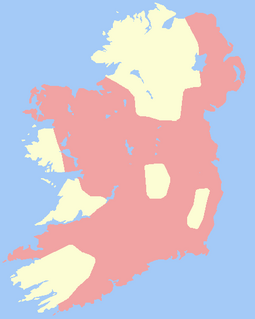
The Bruce campaign was a three-year military campaign in Ireland by Edward Bruce, brother of the Scottish king Robert the Bruce. It lasted from his landing at Larne in 1315 to his defeat and death in 1318 at the Battle of Faughart in County Louth. It was part of the First War of Scottish Independence and the conflict between the Irish, Scoto-Normans, and the Hiberno-Normans.

The Battle of the Pass of Brander in Scotland forms a small part of the wider struggle known as the Wars of Scottish Independence, and a large part of the civil war between the Bruce and Balliol factions, a parallel and overlapping conflict. It was a victory for King Robert the Bruce over the MacDougalls of Argyll, kinsmen of John Comyn, also known as the Red Comyn, who had been murdered by Bruce and his adherents at Dumfries in 1306. The sources do not allow us to determine the date of the battle with any degree of precision: various dates between 1308 and 1309 have been suggested, though the late summer of 1308 would seem to be the most likely. Traquair dates it to August 1308.
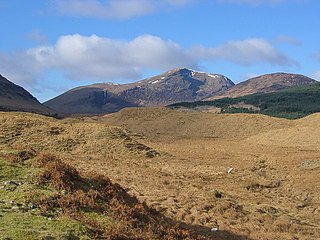
The Battle of Dalrigh, also known as the Battle of Dail Righ, Battle of Dalry or Battle of Strathfillan, was fought in 1306 between the army of King Robert the Bruce against Clan MacDougall of Argyll, who were allies of Clan Comyn and the English. It took place at the hamlet of Dalrigh near Tyndrum in Perthshire, Scotland. Bruce's army, reeling westwards after defeat by the English on 19 June at the Battle of Methven, was intercepted and all but destroyed, with Bruce himself narrowly escaping capture. The battle took place sometime between July and early August, but the exact date is unknown.

Robert Wishart was Bishop of Glasgow during the Wars of Scottish Independence and a leading supporter of Sir William Wallace and King Robert Bruce. For Wishart and many of his fellow churchmen, the freedom of Scotland and the freedom of the Scottish church were one and the same thing. His support for the national cause was to be of crucial importance at some critical times.

New Cumnock is a town in East Ayrshire, Scotland. It expanded during the coal-mining era from the late 18th century, and mining remained its key industry until its pits were shut in the 1960s. The town is 5.7 miles (9.2 km) south-east of Cumnock, and 21 miles (34 km) east of Ayr.
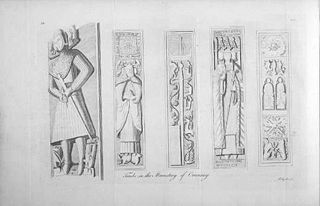
John of Islay was the Lord of the Isles (1336–1386) and chief of Clan Donald. In 1336, he styled himself Dominus Insularum, "Lord of the Isles"; because this is the first ever recorded instance of the title in use, modern historians count John as the first of the later medieval Lords of the Isles, although this rather broad Latin style corresponds roughly with the older Gaelic title Rí Innse Gall, in use since the Viking Age, and for instance, the even more similar Latin title dominus de Inchegal, applied to Raghnall Mac Somhairle in the mid-12th century. In fact John is actually styled Rí Innsi Gall or King of the Isles shortly after his death in a contemporary entry in the Irish Annals of Ulster.
Events from the 1310s in England.

Alexander of Argyll, also known as Alexander of Lorne, and Alexander MacDougall, was a Scottish magnate from the late 13th and early 14th century.

The Lord of the Isles is a narrative poem by Walter Scott in six cantos with substantial notes. Set in 1307 and 1314 Scotland it covers the story of Robert the Bruce from his return from exile in Ireland to the successful culmination of his struggle to secure Scottish independence from English control at the Battle of Bannockburn. Interwoven with this account is a romantic fiction centring on one of the Bruce's prominent supporters, Ronald, Lord of the Isles, involving his love for the Bruce's sister Isabel, who eventually takes the veil, and the transfer of his affections to Edith of Lorn to whom he had been betrothed at the beginning of the poem and whom he marries at the end.
Events from the year 1307 in the Kingdom of Scotland.